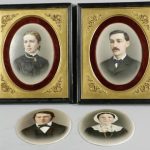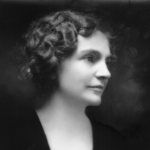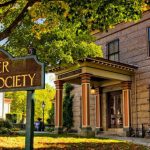The FRHS collection of 19th and 20th century Fall River textile mill material is, without doubt, the largest in existence – and is ever-growing, evidenced by the following:
Last week a Somerset woman visited the museum as a follow-up to a prior telephone call; she was carrying an opaque plastic bag with LAUNDRY printed on its surface in bold black letters – she was not, however, delivering laundry, although it may have seemed so to a few customers in the museum shop at the time.
The bag contained a small but very interesting collection of Sagamore Manufacturing Company records and demonstrates why I repeatedly say – the proverbial broken record – that there is still much significant material out there.
The Sagamore Mills was originally established in 1872 with Louis Laurent Barnard (1815-1880) as president; it failed in 1879. Barnard was heavily invested in Fall River’s textile industry and served on the boards of numerous highly profitable corporations – the Barnard Mills bore his name.
He was a somewhat eccentric individual with a penchant for a grand lifestyle and resided in Fall River’s largest house – “Barnard’s Folly” on North Main Street contained a whopping twenty-two rooms on its first and second floors, boasted a pipe organ, and an inordinately large collection of clocks, precisely maintained to strike in unison. How many additional rooms were on the third floor, I wonder? It still stands on French’s Hill in an eviscerated and far less grand form, having been cut in two in 1906 by Barnard’s equally eccentric granddaughter, Mrs. Philip Scully, née Jessie Amelia Barnard (1868-1967), and converted into multiple apartments; the addresses are 547-549 and 553-555 North Main Street.
The Barnard saga reads like an epic novel, but was all too true … fascinating family! Fall River’s gossipmongers had a field day with the Barnards.
But I digress.
The bankrupt Sagamore Mills was reorganized by prominent Fall River industrialist, Hezekiah Anthony Brayton (1835-1908) – the polar opposite of Barnard – as the Sagamore Manufacturing Company and was a very successful and long lived corporation.
They operated three mills, constructed of brick or granite, on Ace and North Main Streets: Sagamore #1 was constructed in 1888 to replace the original structure, built in 1872 and destroyed by fire in 1884; Sagamore #2, built in 1882; and Sagamore #3 built in 1908.
Brayton descendants maintained principal interest in the company until it was liquidated in 1970; it was one of the last cotton mills to operate in Fall River.
Here is a brief inventory of the contents of the Laundry Bag:
Account Book:
1879 & 1880
This record of financial accounts was kept by Hezekiah A. Brayton, who served as treasurer of the Sagamore Manufacturing Company.
In true Yankee fashion, an ever-frugal Brayton recorded these accounts in an unused Fall River First National Bank account book, in which the institution name was stricken out in ink.
Waste not, want not.
Bank Book:
November 8, 1892, to December 22, 1896
“B.M.C. Durfee Safe Deposit and Trust Company, Fall River, Mass., in account with Hezekiah A. Brayton.” This was one of Brayton’s personal bank books – clearly, times were good, if you were one of the fortunate few that was a principal shareholder in a mill(s); for the rest of us … well, not so good.
Cotton Accounts:
March 23, 1915, to June 24, 1916
This red leather-bound notebook contains a wealth of details pertinent to cotton purchases made over a fifteen-month period, including the quantity of bales – a staggering amount – the place or origin, broker(s), and any identifying marks. There was a complex system established for safeguarding the identification of cotton bales during shipping, with labels usually affixed to the heavy wire strapping securing the bales.
One of the entries:
“17,179 Bales Bought during six months ending Mar[ch] 27, 1915. Ave[rage] price 7.60.”
Fascinating information, especially so to anyone researching the history of cotton production in the United States, and/or the inner working of the supply chain.
Summary of Machinery Mill #1:
1880s – Early 20th century
This account book details the particulars of the cost of construction of Mill #1, constructed in 1888, and details of machinery purchased for every department.
For example:
Construction of Mill #1: $137,563.81
Machinery: $383,995.47
Improvement: 13,745.00
Total: $535,604.28
The financial and statistical information contained in this volume is detailed and extremely precise, furnishing important data. For anyone researching the cost of constructing and fitting up a mill in late 19th century Fall River – here it is.
Ephemera:
1896; 1897; 1919; 1920 and undated
This small collection of ephemera – that is, material on paper, printed or written, and not expected to be preserved – includes receipts and cancelled payroll or business checks. This material offers insight into the day-to-day operations of the mill.
For example:
On October 4, 1919, employee Manuel Cabral received $11.52: “In payment of difference between what I earned #3 Slashing Room and what I received from State Guards – 3 weeks @ 3.84 per week to date.” Service in the State Guard brought Manuel $1.55 per day; he served seven days for a total of $10.85.
Obscure information, likely not recorded elsewhere.
Prior to this acquisition of these Sagamore Manufacturing Company accounts, the FRHS archival collection catalogue contained only nine records for that mill, including: a cost of operations ledger; directors record books; insurance plans; a labor book; liquidation records; property plans; and a rent book.
Through the acquisition of this seemingly small collection, the scope of the Sagamore Mills material held by the FRHS has increased considerably – furthermore, none of the records recently acquired were previously documented by type in the collection.
Another link – links, actually – in the chain of Fall River history.
The FRHS continues to forge additional links at an impressive rate.
A remarkable accomplishment, that.









